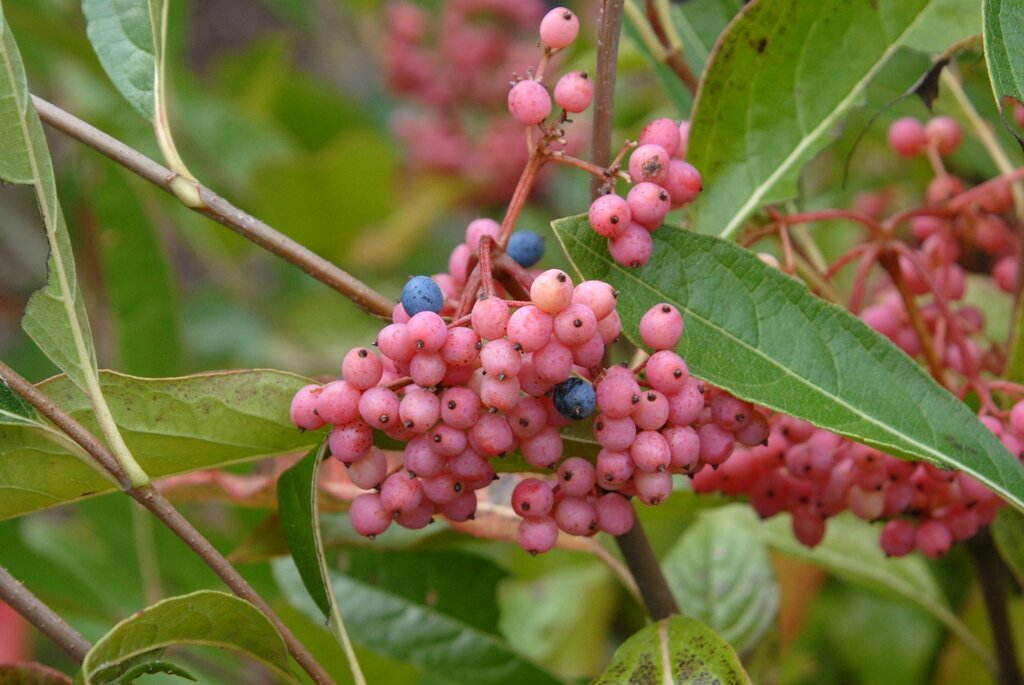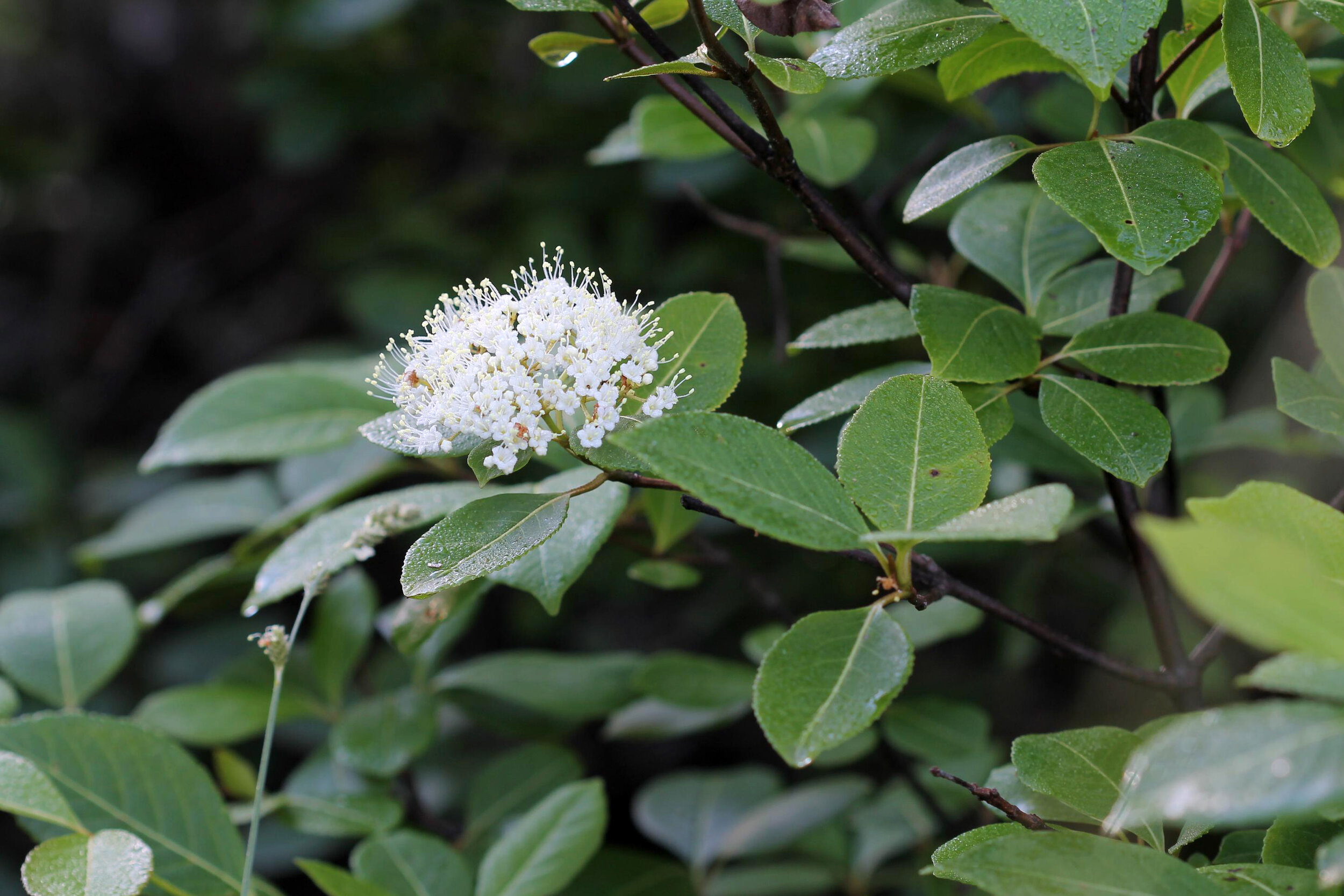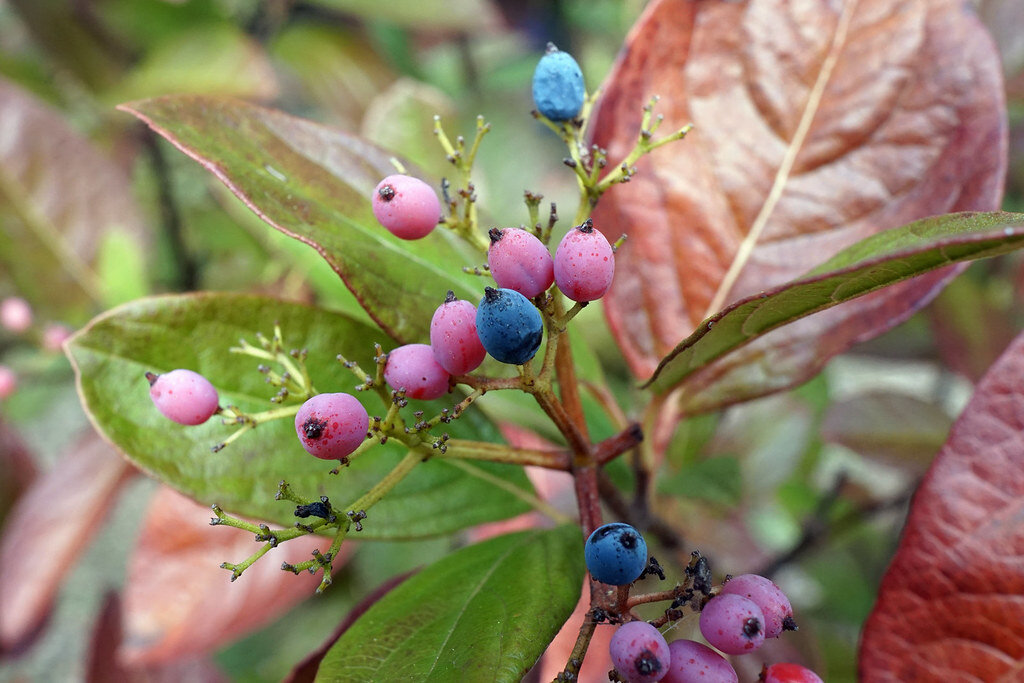Smooth Witherod
Scientific Description
Smooth witherod (Viburnum nudum) is a stunning, perennial, deciduous shrub found throughout the eastern and southeastern United States from Connecticut to Florida and then westward to Louisiana. It achieves a height of five to 12 feet tall and five to 12 feet in spread depending on environmental conditions. It grows best in medium to wet, well-drained soils and in full sun to partial shade. The white flowers bloom from April through May and are quite fragrant.
Smooth witherod is found in low woods, bogs, and swamps. The mature plant should only be pruned as needed in the summer after blooming to ensure time for the growth of new foliage for next year’s flowers and fruit. The oblong leaves are one to four inches long and they turn color from a summer glossy green to a reddish-purple in the autumn.
The fruit of this species is quite acidic but can be eaten. The oblong berries change color as they mature from a light pink to a dark purple or purple-black.
Habitat Value
This shrub draws butterflies. It has no insect or disease conditions that the homeowner should be aware of. Smooth witherod is often planted in groups rather than as individuals, thereby decreasing the time to fill a landscape void and increase fruit production.
Landscape Value
By Matt Whitaker of WMWA Landscape Architects
It is hard for a plant person to list favorites, but there is no list of favorites for me that does not have this plant in the top three or four. Viburnum nudum is one of the most flexible, beautiful, and rewarding landscape shrubs you can plant. This native shrub has several widely grown cultivars and is common in nurseries. Winterthur is a compact cultivar that grows to six feet tall and four feet wide and is perhaps the best performing cultivar. The spring growth of this species has a leather tint that fades to lime green then dark green by summer. The fall foliage is a spectacular burgundy. Its fruit is one of its most striking characteristics starting green then turning pink, then red, then blue, and finally black. Often all five colors are present on the same cluster at once. V. nudum makes an excellent foundation plant, screen, or specimen (with a non-compact selection). V. nudum is one of a tiny handful of plants I have never seen deer even nibble in the highest of deer pressure regions. If you are planting a cultivar and want berries, you will need to add another cultivar or a straight species individual for pollination and fruit production. The taxonomists have moved V. nudum and cassinoides around and currently, according to the USDA, cassinoides falls under nudum. Nudum’s assigned common name is Possumhaw, and cassinoides is smooth witherod. I see no point debating common names; if one wants to be specific, common names are irrelevant.





